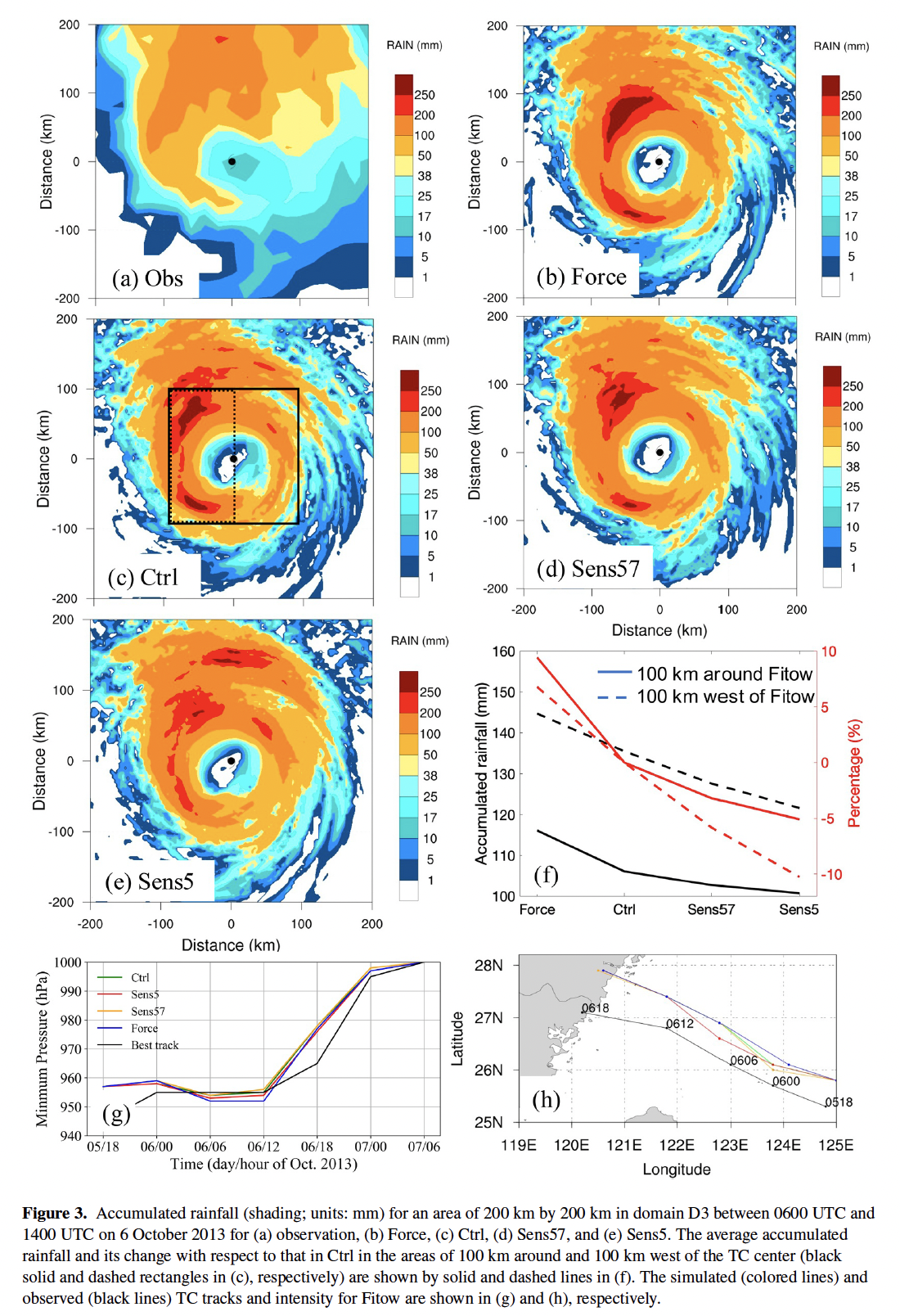Editor: 邵丹蕾 Author: Shoujuan Shu Time: 2022-02-23 Number of visits :191
For the landfalling tropical cyclones (TCs) over the western North Pacific, the intrusion of dry air into the TCs is extensive and significant since the dry air may come from both a high-pressure system and the dry mid-to-high-latitude continent. Under the dry environment, the sea-salt aerosols (SSAs) appear to be coated inhomogeneous spheres according to previous findings. However, the physical process associated with the inhomogeneity of the SSAs has never been considered in both research and operational forecast of TCs, which may partly account for the discrepancy between simulation (or forecast) and observation of TCs.

In this study, the evolution of landfalling Typhoon Fitow in the western North Pacific in 2013 is simulated with an emphasis on the direct radiative effect of sea-salt aerosols (SSAs) on the precipitation of Fitow. The inhomogeneous SSAs, formed under the environment with low relative humidity (50%–70%), exhibit different optical properties (particular the decreased asymmetry factor) compared with the commonly used homogeneous sea-salt droplets. We find that incorporating the inhomogeneity of SSAs in the Weather Research and Forecasting (WRF) model decreases the simulated rainfall of Fitow in coastal regions where the continental dry air intrudes. Fundamentally, the cooling effect induced by the particle inhomogeneity and its hysteresis increase atmospheric stability and weaken vertical velocity, which reduce the accumulated rainfall of Fitow. These findings of radiation-related effects of SSAs provide a new clue for improving the physical processes responsible for precipitation of tropical cyclones in numerical models.
This work has been done cooperatively by Dr. Shoujuan Shu’s and Dr. Lei Bi’s groups and published on Geophysical Research Letters (a NI journal). The first author Limin Zhu is a postgraduate student under the supervision of Dr. Shoujuan Shu. The corresponding authors are Dr. Shoujuan Shu and Dr. Lei Bi. This study is supported by the National Natural Science Foundation of China under grant no. 41775041.
For more details:
Zhu, L., Shu, S., Wang, Z., & Bi, L. (2022). More or less: How do inhomogeneous sea-salt aerosols affect the precipitation of landfalling tropical cyclones? Geophysical Research Letters, 49, e2021GL097023. https://doi.org/10.1029/2021GL097023.
